Vietnamese desserts are an essential part of the adventure, blending traditional flavors with local ingredients. Whether you're exploring bustling cities or remote villages, these unique sweets capture the essence of Vietnam’s rich culture. Join Frontier Travel Vietnam and discover must-try desserts that will sweeten your journey with us.

1. Vietnamese Sweet Soup (Chè)
Vietnamese sweet soup, or "chè," is a versatile and beloved dessert that comes in many varieties, blending ingredients like beans, fruits, coconut milk, nuts, and glutinous rice. Chè is not just a dessert but also a refreshing way to cool down after a day of exploring Vietnam, making it an ideal treat for adventure seekers.
Some popular versions include chè Ba Màu (three-color dessert), made with three types of beans, jelly, and coconut milk, and chè Thái, a fruit-based version with lychee, jackfruit, and coconut milk. There's also chè Đậu Xanh (mung bean soup) and chè Sương Sáo (grass jelly), both of which offer distinct flavors and textures.
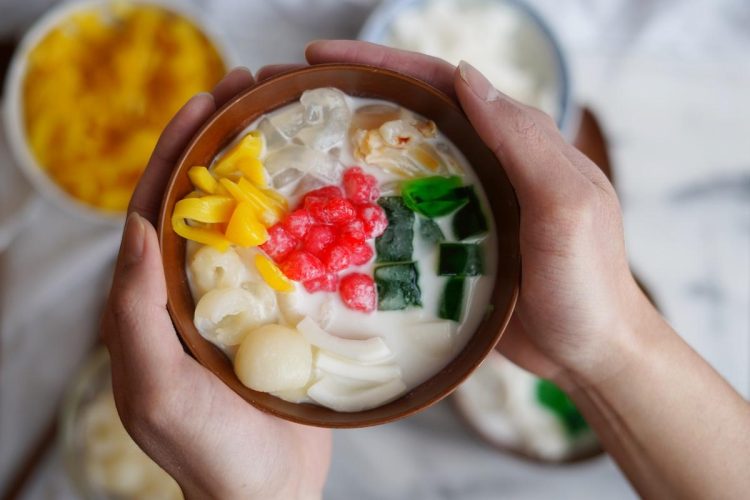
Where to Try Chè:
Here are some recommended spots across Vietnam to experience this delightful dessert:
- Hanoi:
- Chè 4 Mùa (4 Seasons Chè) in Hang Can Street is a famous spot in the Old Quarter. They serve traditional chè with a variety of seasonal flavors.
- Chè Bà Thìn on Bát Đàn Street is known for its long-standing tradition of serving the best mung bean and black bean chè.
- Ho Chi Minh City:
- Chè Hiển Khánh on Nguyễn Đình Chiểu Street is an iconic dessert shop that has been serving various types of chè for generations, with a focus on classic flavors like lotus seed and mung bean.
- Chè Kỳ Đồng in District 3 offers a wide range of chè varieties, including the popular chè Thái with mixed tropical fruits.
- Hoi An:
- Chè Thập Cẩm at the Central Market is a local favorite where you can try different chè varieties, especially after exploring the town.
- Mót Hoi An, although known for its herbal drinks, serves a delicious twist on traditional chè with unique local ingredients.
- Hue:
- Hue is known for its imperial cuisine, and chè Hẻm is a hidden gem tucked away in an alley on Hùng Vương Street, where you can taste royal-style chè made with lotus seeds and taro.
2. Yogurt with Fermented Sticky Rice (Sữa Chua Nếp Cẩm)
Yogurt with fermented sticky rice, known as sữa chua nếp cẩm in Vietnamese, is a popular and refreshing dessert that uniquely blends sweet and sour flavors. The creamy tanginess of yogurt perfectly complements the sweetness of the fermented sticky rice, resulting in a delightful mix of textures and tastes.
The dish is prepared by soaking sticky rice overnight, then fermenting it with a special type of yeast. This fermentation process gives the rice a slightly sour and soft texture, which pairs beautifully with the yogurt’s creaminess. The combination is often topped with a drizzle of coconut milk or crushed ice, making it a perfect snack for hot, tropical days.

Where to Try Sữa Chua Nếp Cẩm:
- Hanoi:
- Sữa Chua Nếp Cẩm Hoa Béo in the Old Quarter is a famous spot known for its creamy yogurt and perfectly fermented sticky rice. Locals rave about the balance of flavors here.
- Sữa Chua Trân Châu Hạ Long on Lý Thái Tổ Street offers a modern twist with their pearl yogurt, but their sữa chua nếp cẩm remains a traditional favorite.
- Ho Chi Minh City:
- Quán Cô Mai in District 1 is a go-to for sữa chua nếp cẩm, offering a variety of yogurt-based desserts. Their fermented sticky rice is always fresh and flavorful.
- Kem xôi sữa chua 37 in District 3 is known for both kem xôi (sticky rice ice cream) and sữa chua nếp cẩm, attracting dessert lovers from across the city.
- Da Nang:
- Sữa Chua Mít on Hoang Dieu Street serves a range of yogurt desserts, including a delicious version of sữa chua nếp cẩm, ideal for a refreshing snack after a day at the beach.
- Nha Trang:
- Yogurt Phương on Tran Phu Street is famous for offering traditional Vietnamese yogurt desserts, and their sữa chua nếp cẩm is a local favorite, especially in the coastal heat.
The fusion of creamy yogurt and tangy, sweet sticky rice makes sữa chua nếp cẩm a must-try dessert, giving you a refreshing break as you explore Vietnam’s vibrant streets and adventure spots.
3. Vietnamese Grilled Banana (Chuối Nếp Nướng)
Vietnamese grilled banana, or chuối nếp nướng, is one of the most famous and beloved desserts in Vietnam. This sweet delight is commonly found at street vendors throughout the country, especially in bustling markets and on busy street corners.
The dish is made by wrapping a ripe banana in a layer of sticky rice mixed with coconut milk, then grilling it until the exterior becomes crispy and caramelized, while the inside remains soft and sweet. The banana’s natural sweetness blends with the rich coconut flavor, resulting in a satisfying treat. Some variations include a sprinkle of sesame seeds or crushed peanuts for added texture and flavor.
Typically served hot off the grill, chuối nếp nướng is a popular snack or dessert, especially loved for its warm, comforting taste. The combination of caramelized banana and sticky rice makes it an irresistible treat for anyone with a sweet tooth.
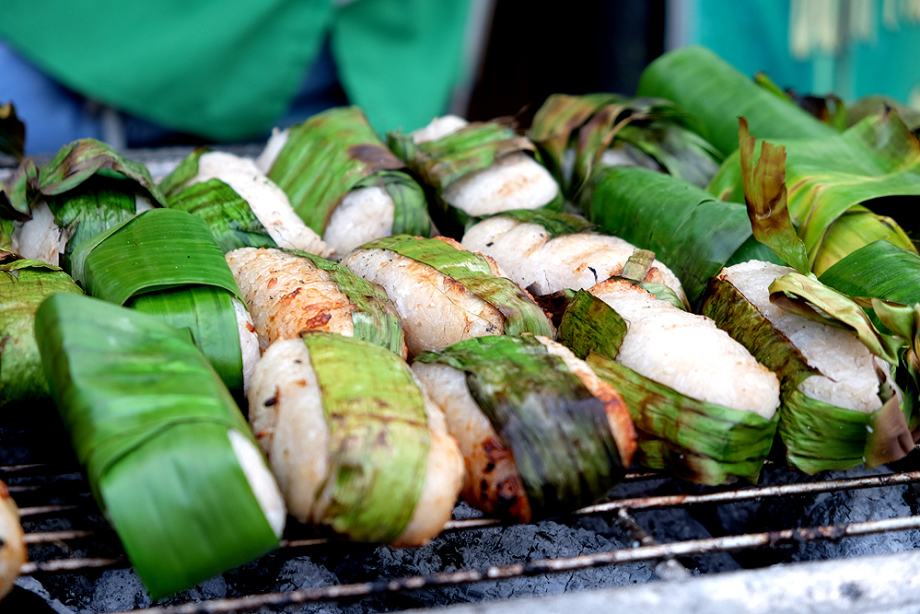
Where to Try Chuối Nếp Nướng:
- Ho Chi Minh City:
- Chuối Nếp Nướng Võ Văn Tần in District 3 is one of the most famous spots for grilled bananas, where the dessert is served with a generous drizzle of sweet coconut sauce.
- Chuối Nếp Nướng Bình Thạnh is another popular spot, offering a version topped with roasted peanuts for extra crunch.
- Hanoi:
- Chuối Nếp Nướng Phố Cổ in the Old Quarter is a must-visit for this traditional dessert. Enjoy the smoky, caramelized bananas as you explore the city’s vibrant streets.
- Can Tho:
- Chuối Nếp Nướng Cái Răng Floating Market is an authentic place to try this dessert. Vendors grill bananas on their boats, providing a unique floating market experience along with a delicious treat.
4. Sticky Rice with Ice Cream (Kem Xôi)
Sticky rice with ice cream, known as kem xôi, is a delightful and innovative dessert that marries two popular treats into one unforgettable dish. This unique dessert features a mound of warm sticky rice topped with a generous scoop of rich and creamy ice cream, usually flavored with coconut or durian.
The contrast between the warm, slightly chewy rice and the cold, creamy ice cream creates a refreshing experience that is both comforting and satisfying. The sweetness of the sticky rice complements the ice cream perfectly, making it an ideal treat on a hot summer day.
You can find kem xôi at various street vendors and dessert shops throughout Vietnam, especially in tourist areas and bustling markets. It’s a fantastic snack that showcases the country’s love for combining flavors and textures.
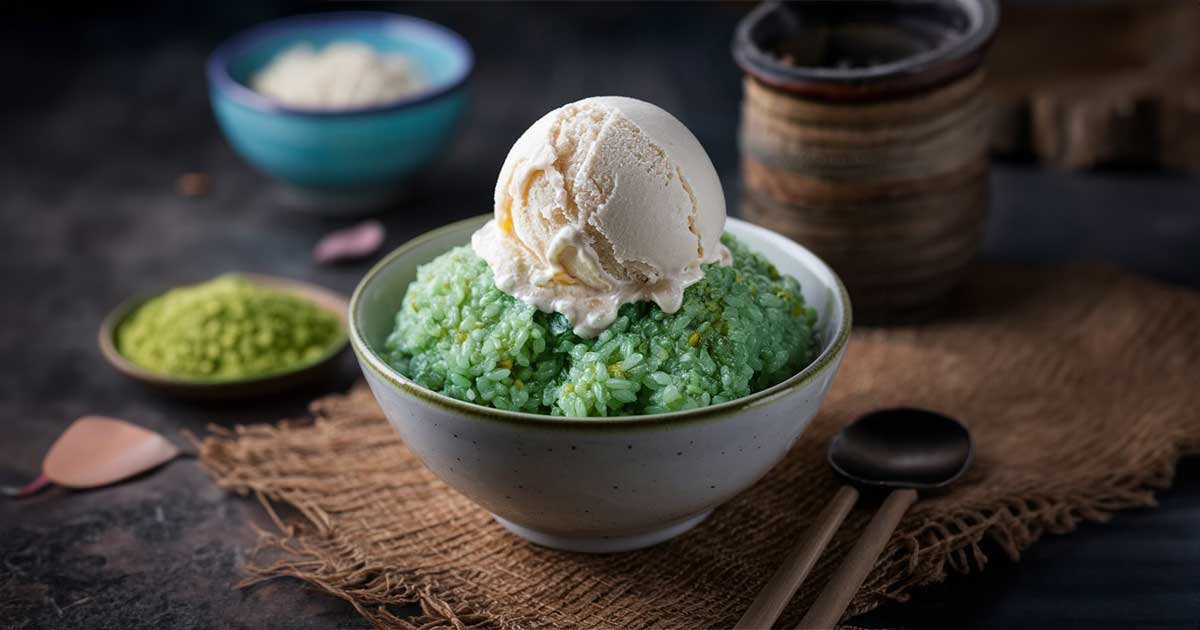
Where to Try Kem Xôi:
- Ho Chi Minh City:
- Kem Xôi Sài Gòn on Lê Văn Sĩ Street is a popular spot known for its generous portions of warm sticky rice paired with delicious coconut ice cream.
- Chè Mâm in District 1 offers a variety of desserts, including kem xôi, where you can customize your toppings with crushed nuts or drizzles of coconut milk.
- Hanoi:
- Kem Xôi Ngọc Hà is a local favorite, known for its creamy ice cream and perfectly cooked sticky rice. This dessert shop often has a line out the door, especially in the summer months.
- Xôi Xéo Thái Hà combines traditional sticky rice dishes with ice cream, making it a must-try for those looking to experience this unique dessert.
- Da Nang:
- Kem Xôi Cô Mận offers a delightful twist on this dessert with tropical fruit toppings and various ice cream flavors, attracting locals and tourists alike.
- Nha Trang:
- Kem Xôi Nha Trang near the beach is a great spot to enjoy kem xôi while taking in the seaside view, providing a perfect blend of flavors and ambiance.
5. Mung Bean Cake (Bánh Đậu Xanh)
Mung bean cake, known as bánh đậu xanh in Vietnamese, is one of the iconic traditional desserts of Vietnam. Made from finely ground mung beans, sugar, and often infused with grapefruit flower essential oils, this delicately sweet cake has a smooth and soft texture that melts in your mouth.
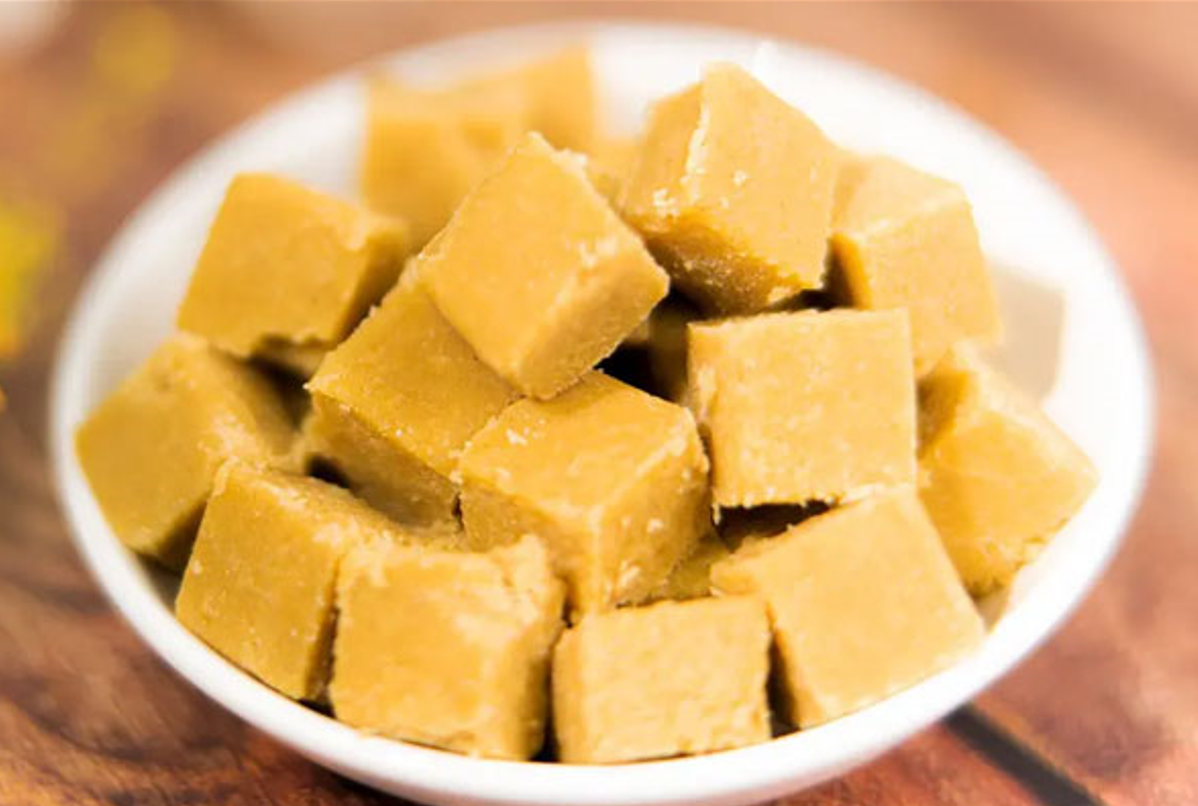
Typically served with a cup of tea, bánh đậu xanh is especially popular during holidays and special occasions, such as the Lunar New Year (Tết). Beyond its delightful taste, this dessert is also believed to have health benefits, including aiding digestion and promoting smooth skin, making it both a tasty and nutritious option.
6. Pandan Rice Cake (Bánh Đúc Lá Dứa)
Pandan rice cake, known as bánh đúc lá dứa in Vietnamese, is a cherished dessert that showcases the vibrant flavors of the region. Made from rice flour, pandan leaves, sugar, and rich coconut cream, this dessert features a soft and chewy texture with a delightful aroma and subtle sweetness derived from the pandan.
To prepare bánh đúc lá dứa, rice flour is mixed with freshly extracted pandan juice and then steamed until firm. The cake is cut into bite-sized pieces and often topped with various garnishes such as roasted peanuts, shredded coconut, or sesame seeds, adding extra flavor and texture.
This dessert is popular throughout Vietnam, enjoyed as a snack or a delightful ending to a meal. Its unique combination of flavors makes it a favorite among locals and visitors alike.
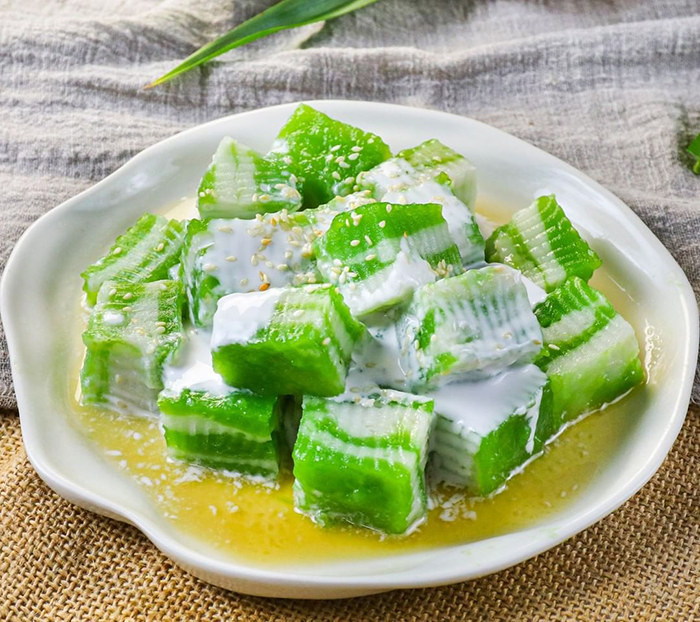
Where to Try Bánh Đúc Lá Dứa:
- Hanoi:
- Bánh Đúc Hàng Bồ is a famous spot where you can enjoy freshly made pandan rice cake. The combination of flavors and textures here is particularly well-loved by locals.
- Bánh Đúc Ngọc Hà offers a delightful version topped with roasted peanuts and shredded coconut, perfect for a sweet snack during your city explorations.
- Ho Chi Minh City:
- Chè Bà Sương in District 1 serves a delicious rendition of bánh đúc lá dứa, often paired with their variety of sweet soups and desserts, creating a perfect dessert experience.
- Bánh Đúc Chè Ba Miền in District 5 specializes in various types of bánh đúc, including pandan rice cake, where you can choose from multiple toppings.
- Da Nang:
- Bánh Đúc Vỹ is known for its unique take on bánh đúc lá dứa, serving it warm with a generous drizzle of coconut cream for added richness.
- Nha Trang:
- Bánh Đúc Lộc at the local markets is a must-try, offering this dessert with fresh toppings and a cozy, local atmosphere.
Make sure to savor bánh đúc lá dứa during your travels in Vietnam. Its delightful texture and fragrant flavors provide a unique glimpse into the country's rich culinary heritage, making it a must-try dessert for any food lover.
7. Vietnamese Donuts (Bánh Tiêu)
Vietnamese donuts, known as bánh tiêu, are simple yet delightful treats that are beloved throughout the country. Made from a mixture of wheat flour, sugar, and yeast, the dough is deep-fried until it achieves a crispy, golden-brown exterior. The result is a crunchy outer layer that gives way to a light and fluffy interior.
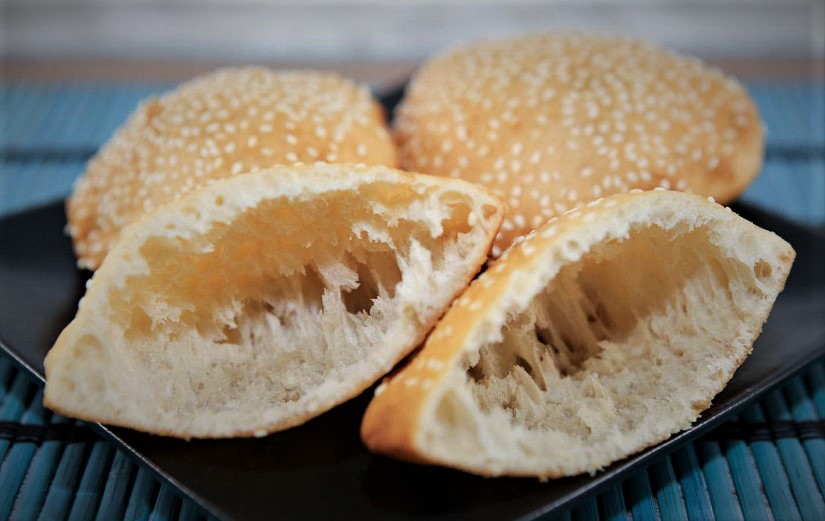
Bánh tiêu can be enjoyed plain or filled with a variety of delicious ingredients, including sweet bean paste, shredded coconut, or sesame seeds. They are often served as a snack or dessert, and are commonly paired with hot soy milk or strong Vietnamese coffee for a satisfying treat any time of day.
8. Tofu Pudding (Tàu Hủ)
Tofu pudding, known as tàu hủ in Vietnamese, is a beloved dessert that exemplifies the light and refreshing nature of Vietnamese sweets. This dessert features a silky smooth texture and a delicate flavor profile, making it a popular choice among locals and tourists alike.
A traditional bowl of tàu hủ consists of fresh soybeans, served with jasmine sugar syrup and crushed ice. The sweetness of the syrup, combined with the gentle aroma of jasmine, creates a harmonious blend that refreshes the palate. In recent years, many locals have enhanced their tàu hủ by adding toppings like grass jelly, tapioca pearls, shredded coconut, and dried coconut, elevating the dessert to new heights.

The unique flavor of the soybeans, the sweetness from the syrup, and the cooling effect of the ice make tàu hủ a perfect summer treat. However, if you happen to visit Hanoi during the winter months, you can still enjoy this dessert warm, with fresh ginger added instead of ice to create a comforting dish that warms the stomach.
9. Honeycomb Cake (Bánh Bò)
Honeycomb cake, known as bánh bò in Vietnamese, is a beloved specialty hailing from the Mekong Delta region. This delightful dessert is crafted from a simple mixture of rice flour, sugar, water, and yeast, resulting in a cake that boasts a unique honeycomb structure. The fermentation process from the yeast creates airy pockets within the cake, giving it a soft and fluffy texture.
Bánh bò is typically steamed, which enhances its delicate nature. It can be flavored with ingredients like pandan for a hint of fragrance or coconut for added richness, making it a versatile treat that appeals to various palates.
This cake is commonly enjoyed as a sweet snack or dessert and is especially popular during festivals and celebrations, where it symbolizes good fortune and prosperity.
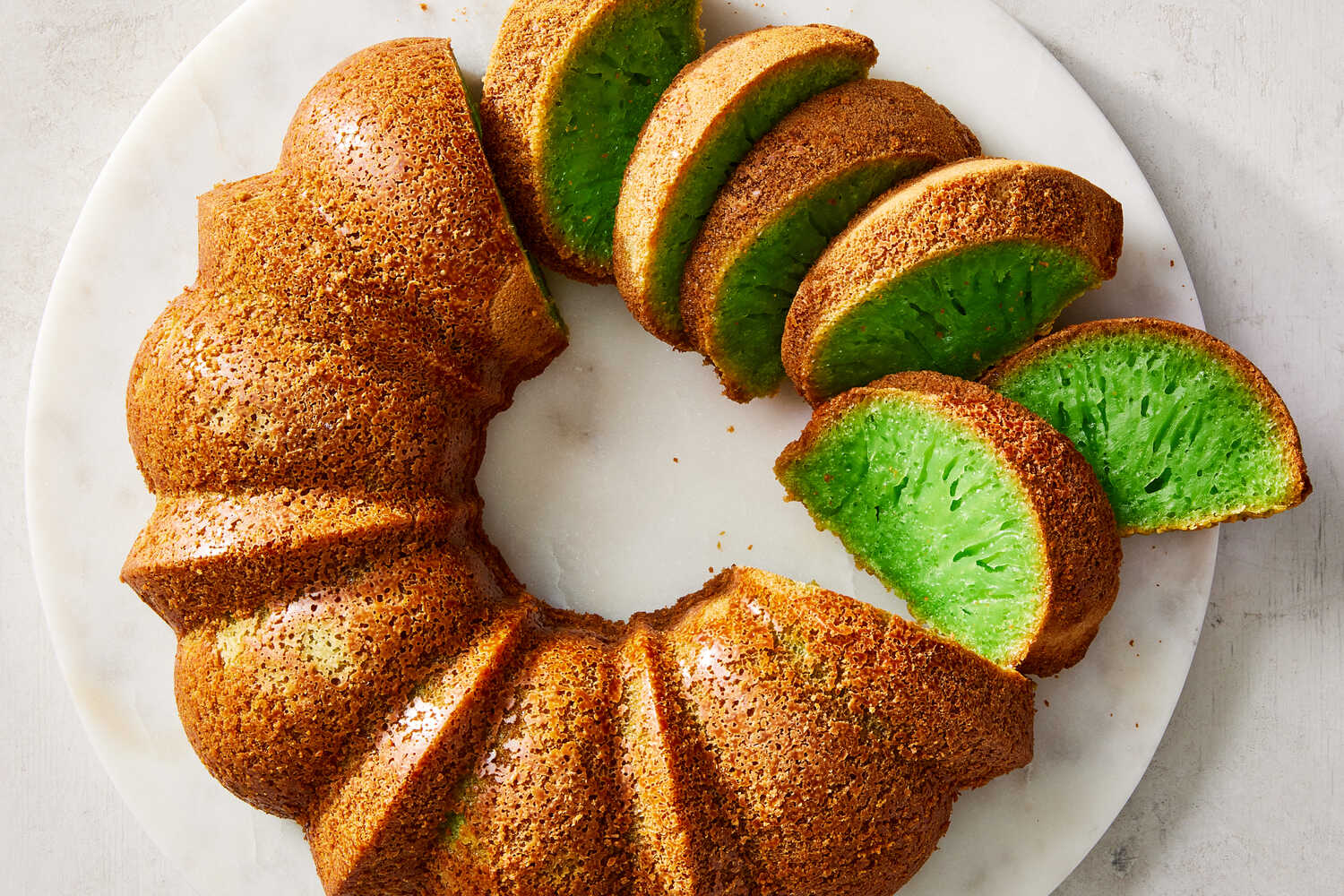
Where to Try Bánh Bò:
- Mekong Delta:
- Bánh Bò Cô Ba in Can Tho is renowned for its traditional bánh bò, often made with fresh ingredients and served warm, showcasing the authentic flavors of the region.
- Bánh Bò Vĩnh Long offers a delicious array of honeycomb cakes, where you can sample both classic and innovative flavors.
- Hanoi:
- Bánh Bò Đường Phố is a popular shop in the Old Quarter, known for its fluffy texture and fragrant pandan flavor, attracting locals and tourists alike.
- Chè Bà Mua serves a delightful version of bánh bò alongside other traditional desserts, providing a complete experience of Vietnamese sweets.
- Ho Chi Minh City:
- Bánh Bò Thúy in District 1 is famous for its fresh honeycomb cakes, often paired with coconut cream for an indulgent treat.
- Bánh Bò Ngọc Hà offers a variety of flavors, allowing you to enjoy this beloved dessert in a vibrant setting.
- Da Nang:
- Bánh Bò 3 Miền specializes in traditional sweets from all over Vietnam, including bánh bò, where you can enjoy it with different toppings.
Sampling bánh bò is a must during your journey through Vietnam, as it not only represents the culinary heritage of the Mekong Delta but also offers a unique taste experience that will leave you craving more.
10. Bánh Pía
Bánh pia is a delightful flaky pastry that hails from the southern region of Vietnam. This exquisite dessert is created by mixing wheat flour, lard, and sugar, followed by a meticulous process of folding and rolling the dough to develop its signature layered texture. The result is a golden, crispy pastry that perfectly encases a rich and creamy filling.
The fillings for bánh pia often include mung bean, taro, or the highly prized durian, each offering a unique taste experience. The slightly sweet and buttery flavor of the pastry pairs wonderfully with the creamy fillings, making it a favorite snack among locals and visitors alike.
Bánh pia is commonly enjoyed as a snack alongside tea or coffee, and it also makes for a popular gift for friends and family, especially during festive occasions and celebrations.
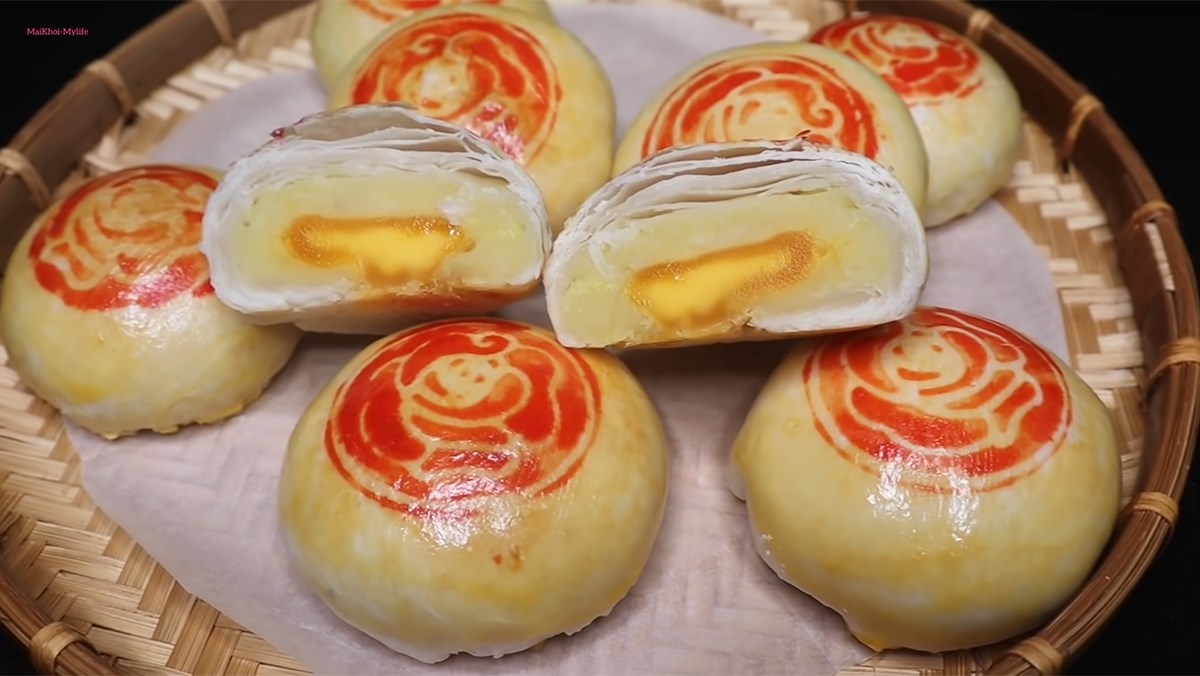
Vietnam's dessert scene is a delightful adventure of flavors and textures, from refreshing chè to flaky bánh pia. Each treat reflects the country's rich culture and culinary traditions. As you explore Vietnam with Frontier Travel Vietnam, don’t miss the chance to indulge in these must-try desserts, enhancing your journey with sweet experiences that capture the essence of this beautiful nation!







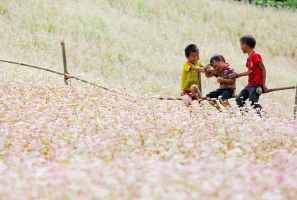

.png)